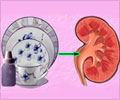Patients who receive hemodialysis are at a significant risk of developing infections. It is a leading cause of hospitalization and death in this patient population.

The United States Renal Data System reported that from 1993 to 2010, the number of hospitalizations due to infection rose by more than 45 percent in chronic hemodialysis (CHD) patients. They noted that patients receiving dialysis were admitted to the hospital two times per year for an average of 12 days, and 36 percent were readmitted within 30 days. During hospitalizations, CHD patients appeared to have contributed to the spread and acquisition of multi-drug resistant organisms (MDROs) among other hospitalized patients.
"The high prevalence of MDROs harbored by CHD patients compared to that in lower-risk populations, compounded by the rising rate of infections, emphasizes the need to reduce the emergence and spread of MDROs in this population," said Graham Snyder, lead researcher in the study. "Despite the high prevalence, there are limited data pertaining to antibiotic use in outpatient hemodialysis units."
Researchers from Boston, in collaboration with the Centers for Disease Control and Prevention, calculated the total antibiotic use over a retrospective 35-month period, and additionally followed 278 patients during a 12-month period and analyzed the antibiotics these patients received at two outpatient dialysis units.
Inappropriate administration of antibiotics was defined as giving antibiotics when criteria for infection based on national guidelines published by major infectious diseases and nephrology societies were not met; failing to use a more narrow-spectrum antimicrobial agent based on culture results; and using antimicrobial prophylaxis when indications for surgical prophylaxis were not met.
A total of 1,003 antimicrobial doses were administered during the 12-month study period. Nearly one in three patients received at least one antimicrobial dose.
Advertisement
Advertisement
"Since antimicrobial exposure is the main risk factor for the emergence and spread of MDROs, minimizing inappropriate antimicrobial use is imperative. The findings of this study provide important information toward minimizing inappropriate antimicrobial use in outpatient dialysis units. By identifying key areas, including best practices in documentation and classification of infections, and a focus on antibiotic de-escalation, this study should lead to future antimicrobial stewardship interventions tailored to outpatient dialysis units," said Snyder.
Source-Eurekalert












